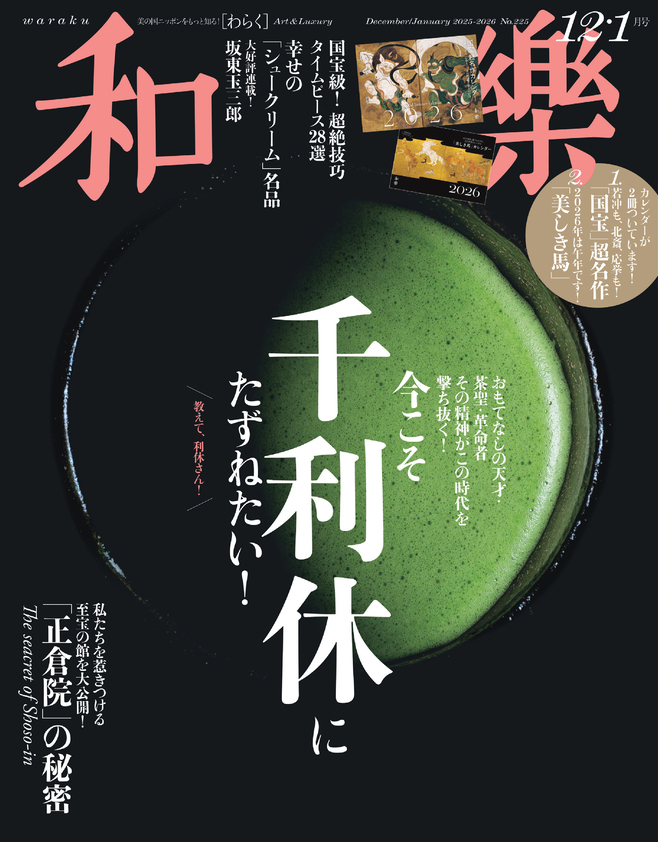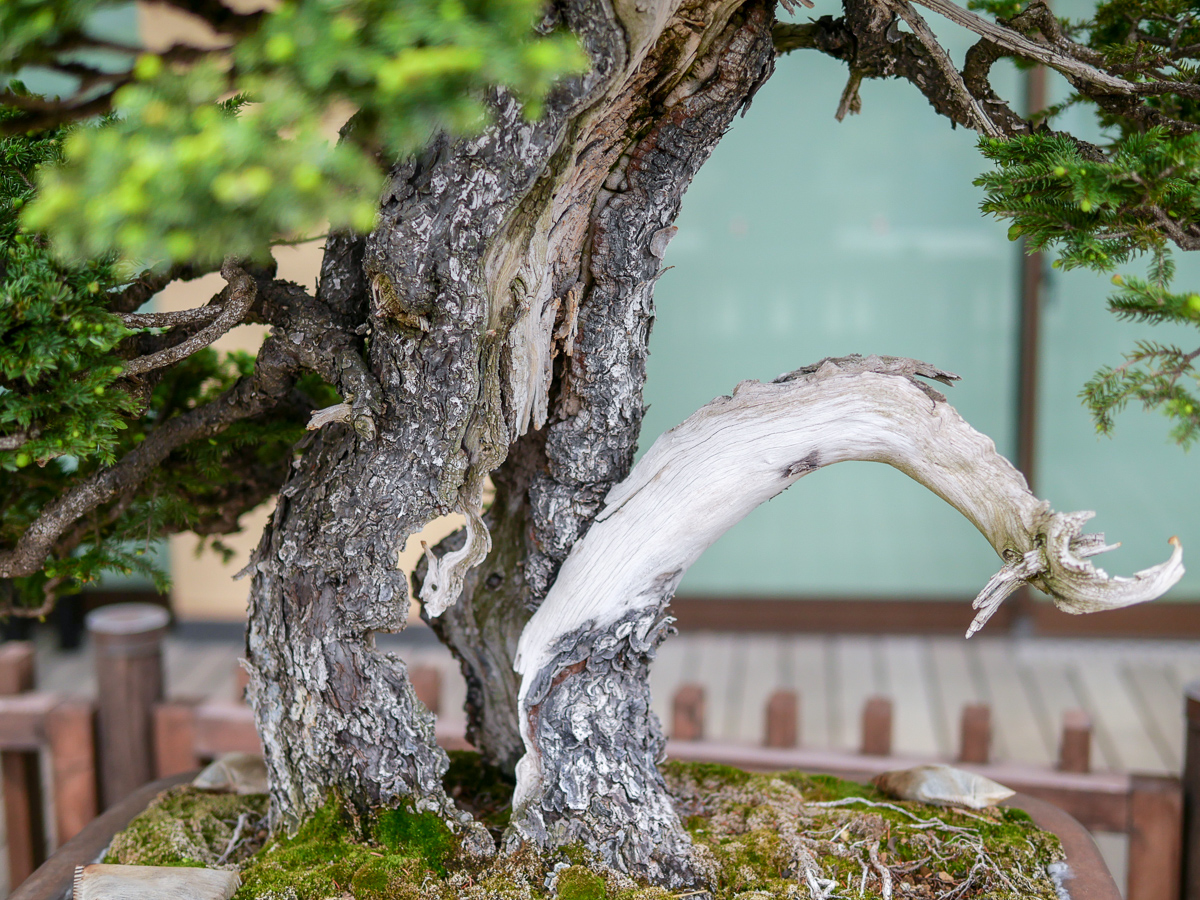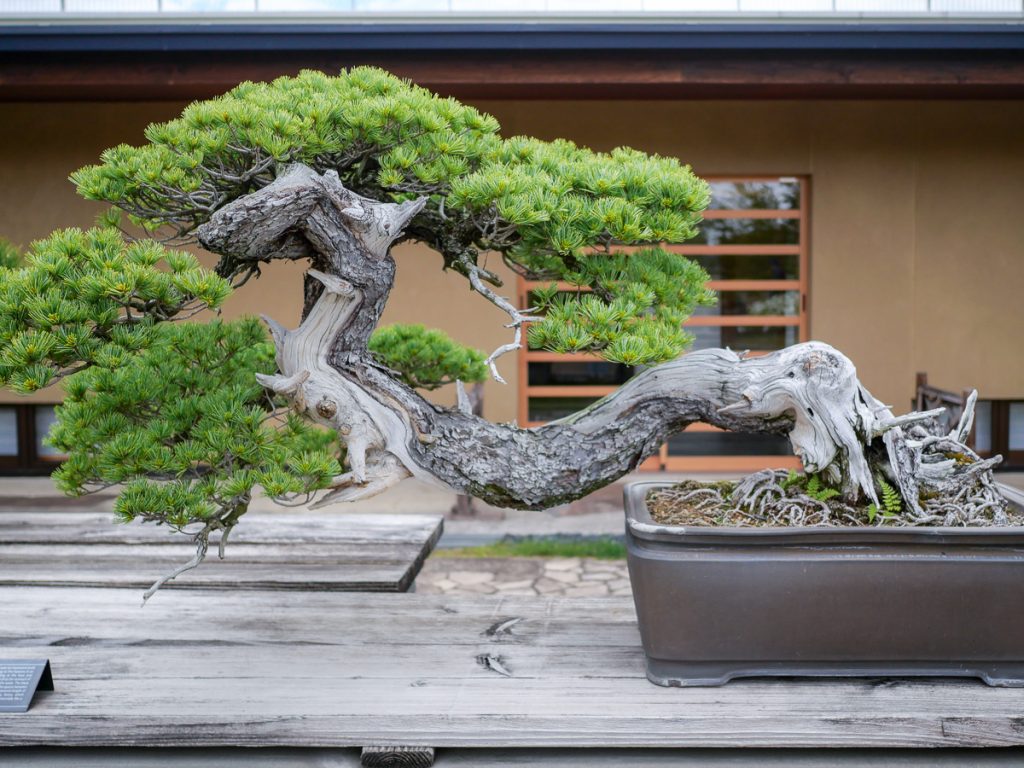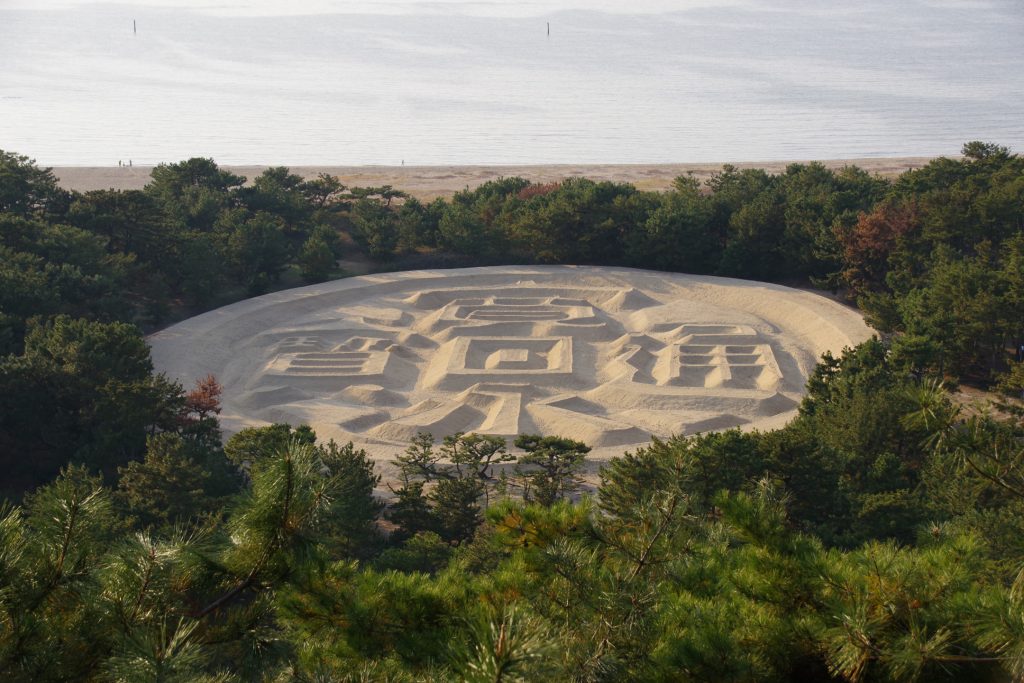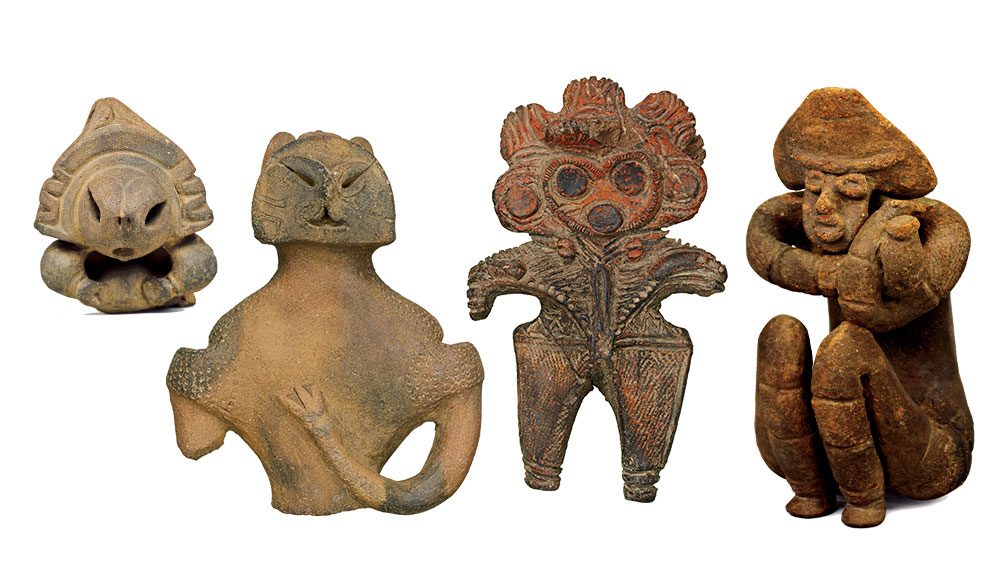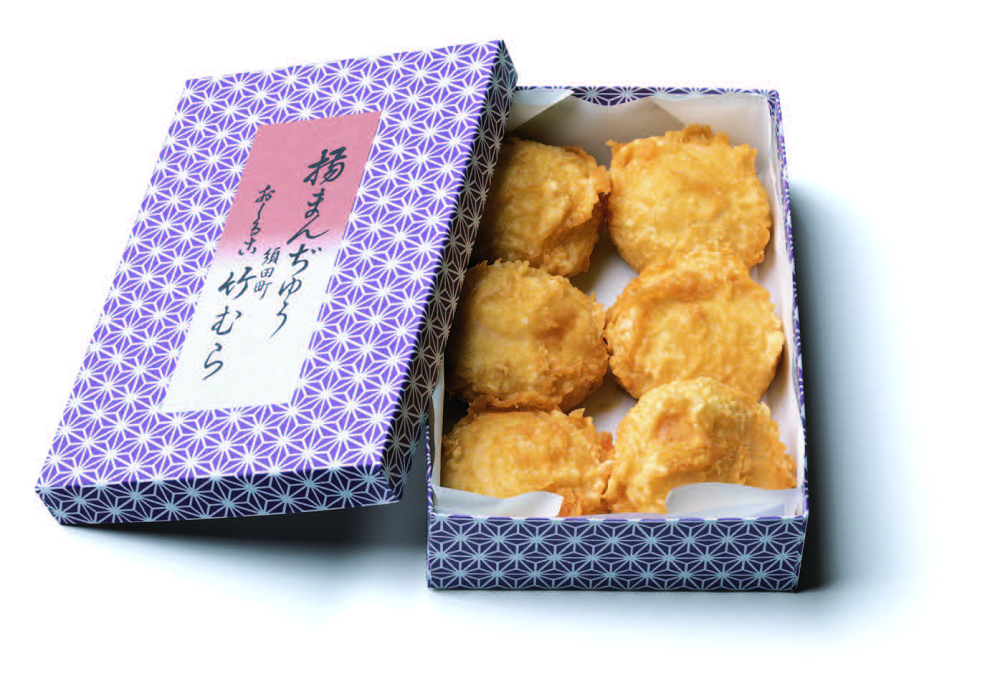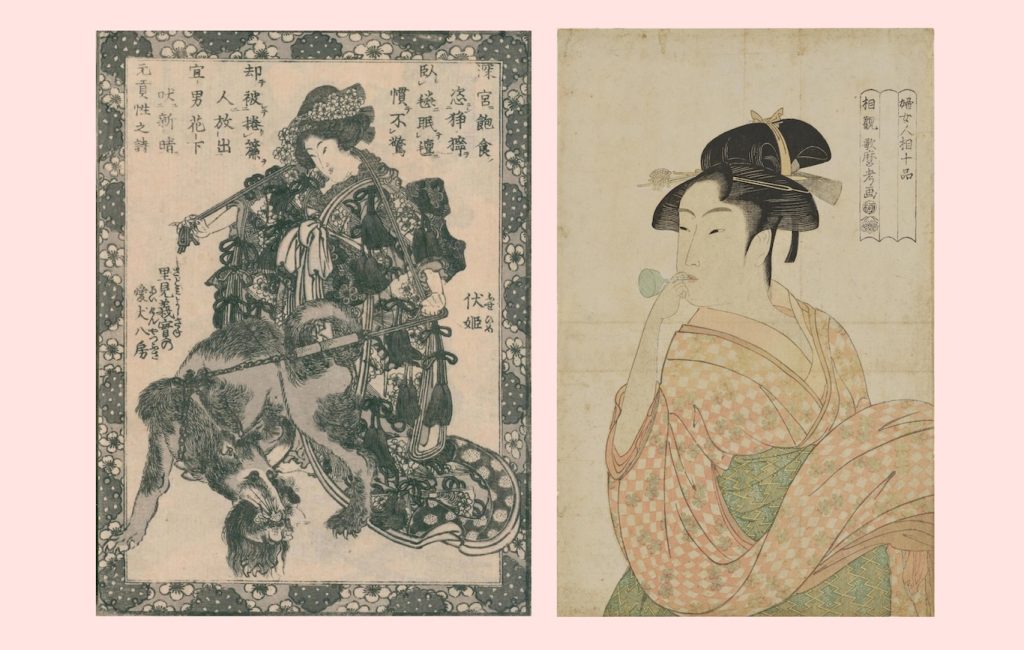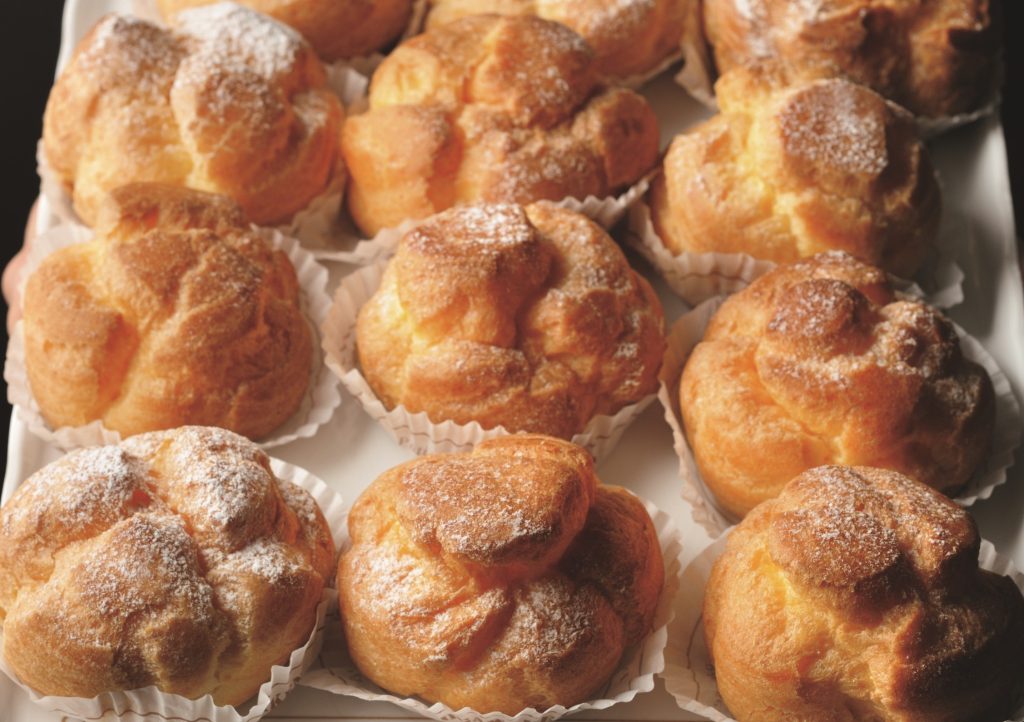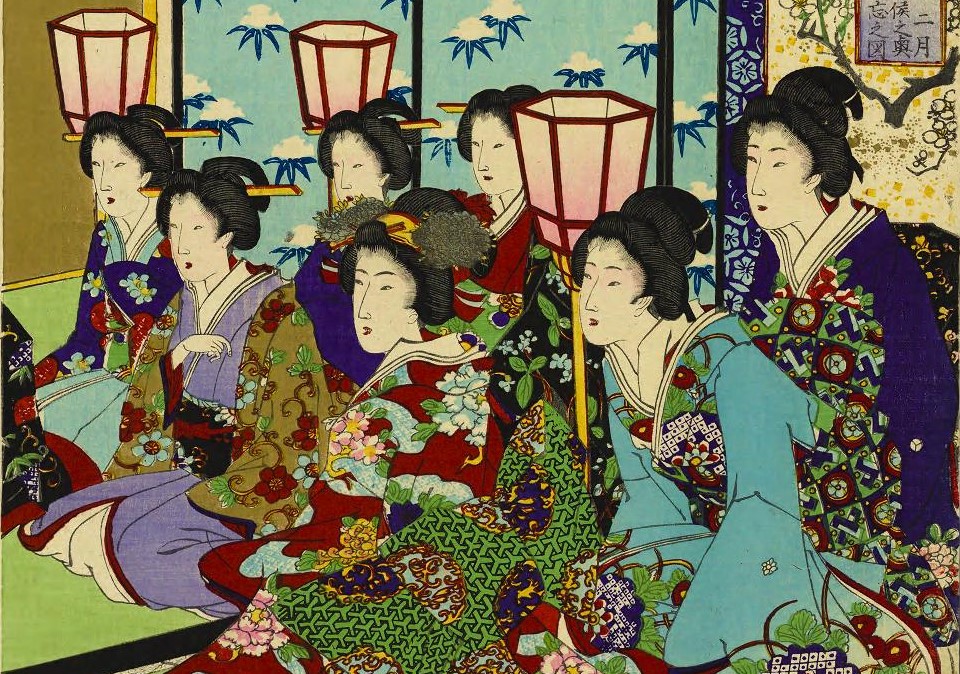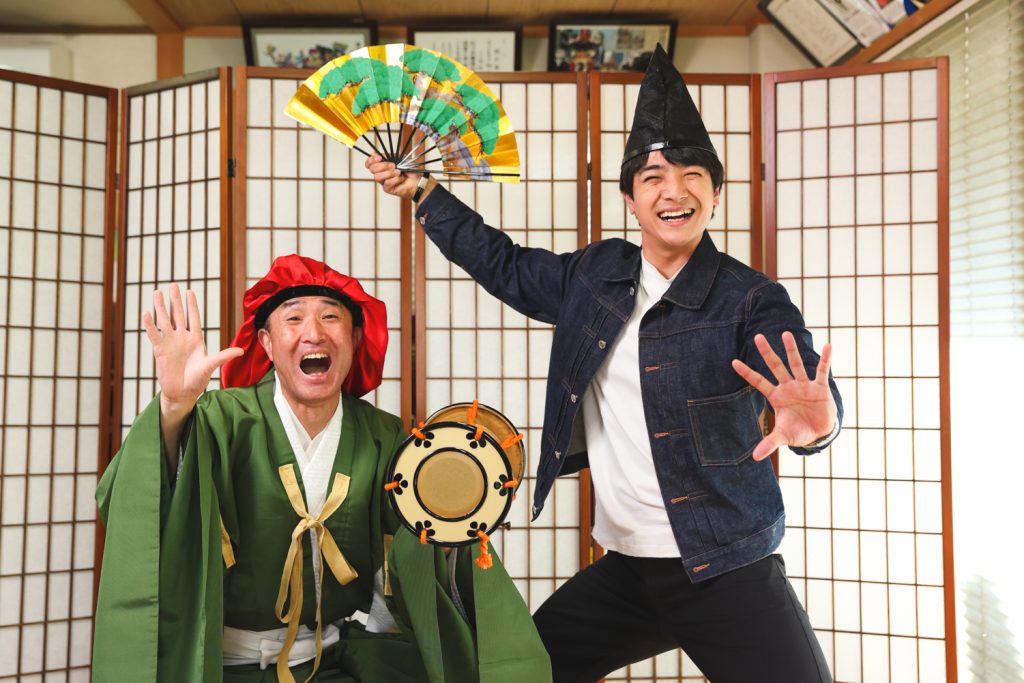Are you interested in bonsai (盆栽) but don’t know how to appreciate them properly? What points should beginners look out for when appreciating bonsai? In this issue, we asked Hashimoto Hiroaki (橋本浩明), Director of the Omiya Bonsai Art Museum, Saitama, to tell us about five points to consider when viewing bonsai.
Five points to consider when viewing bonsai
Following Mr Hashimoto’s explanation of “What is bonsai?”, next we ask him the key things to remember when appreciating bonsai.
1. Front and Back
Firstly, bonsai has a front and a back. The front, or surface, is shaped in a way that its roots, trunk, and branches are easily visible, resembling a posture that bows towards the viewer. In contrast, the back has a shape that appears rounded, like a hunched back. Generally, the most aesthetically pleasing shape and depth are arranged to be seen from the front, so it’s best to start by appreciating the bonsai from that angle.
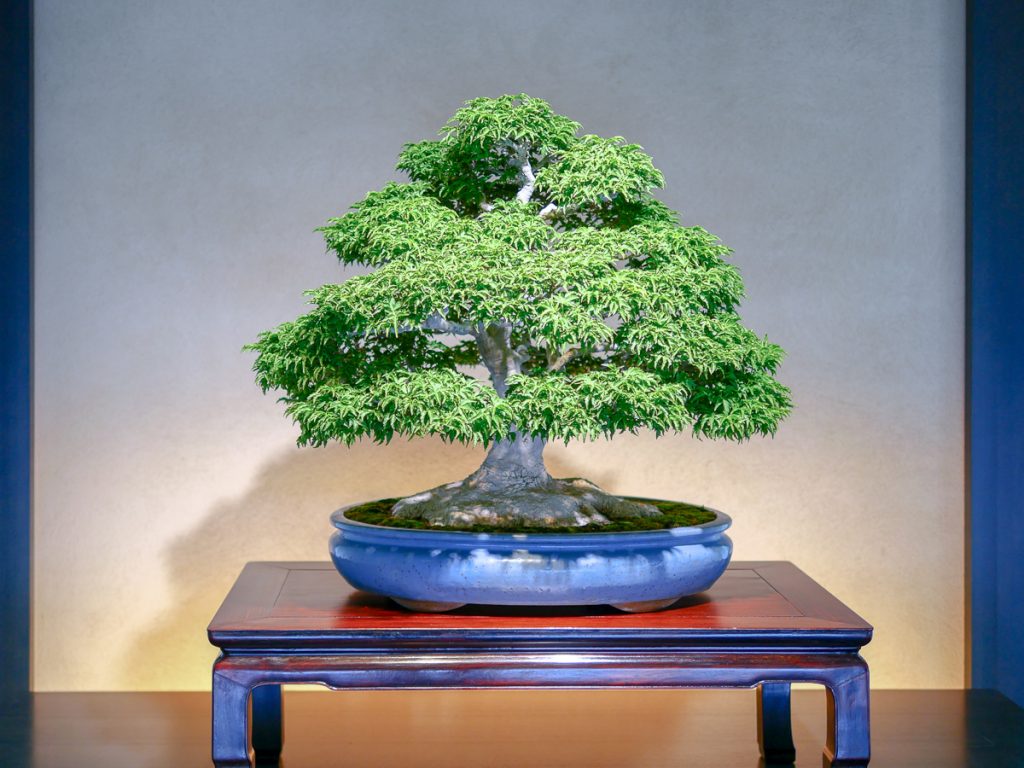
After you’ve appreciated the bonsai from the front, the next step is to crouch down and look up at it. Since bonsai is an art form that recreates the natural appearance of a tree in a pot, viewing it from below allows you to feel small, as if you are gazing up at a large tree. This perspective enhances the enjoyment of imagining nature.
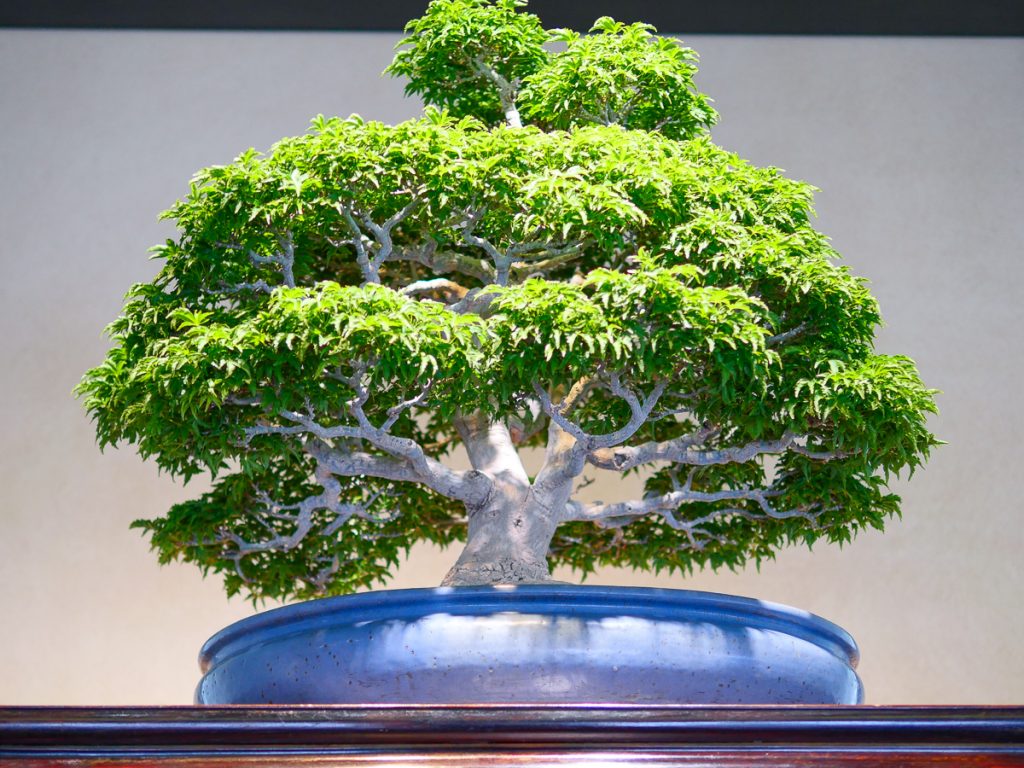
2. Forms that Represent Nature
Bonsai is shaped and refined by human hands, but this is not to create exaggerated forms; rather, it is a technique aimed at honing a more natural appearance. Therefore, the forms of bonsai often feature characteristics that express nature.
For example, there are the styles known as ‘fukinagashi (吹き流し)’ and ‘kengai (懸崖).’ Some bonsai represent trees enduring the harshness of their natural environment. The ‘fukinagashi’ style depicts a tree leaning at an angle, swayed by strong winds, while ‘kengai’ is a form that is shaped to resemble a tree cascading down a steep cliff.
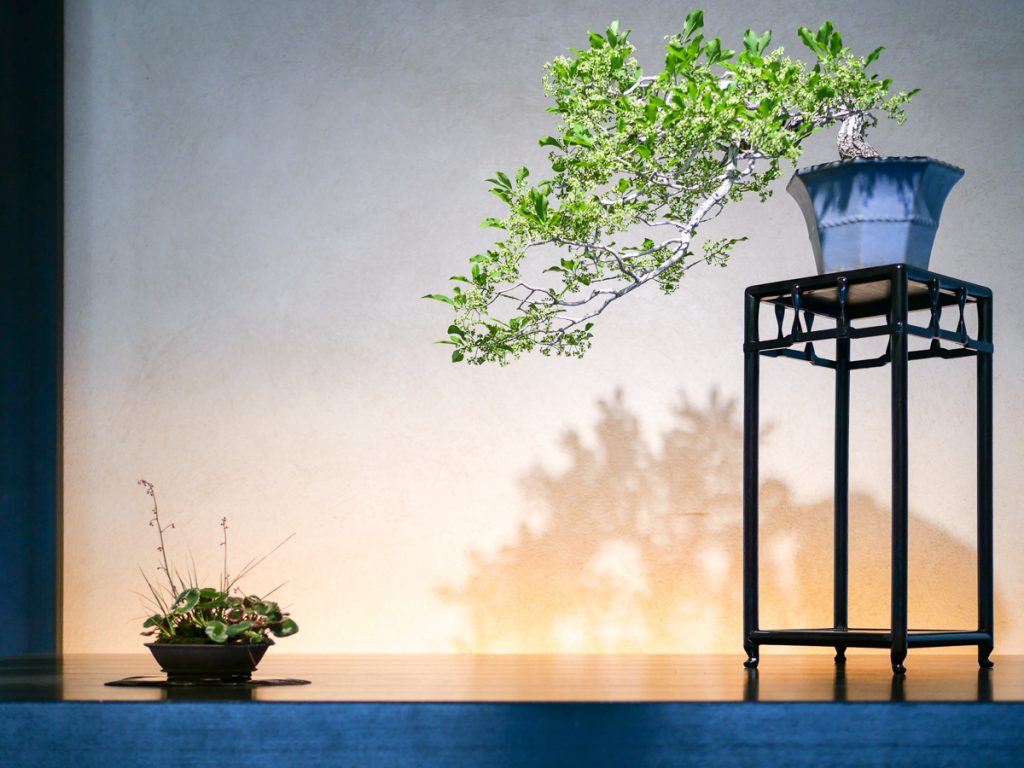
This bonsai is a kengai
Next, there are the styles known as ‘ne-tsuranari (根連なり)’ and ‘yose-ue (寄せ植え).’ The ‘ne-tsuranari’ style depicts multiple trunks extending from a single root, illustrating trees huddled together. On the other hand, ‘yose-ue’ refers to a composition where multiple saplings are planted in a single pot, representing the essence of a forest.
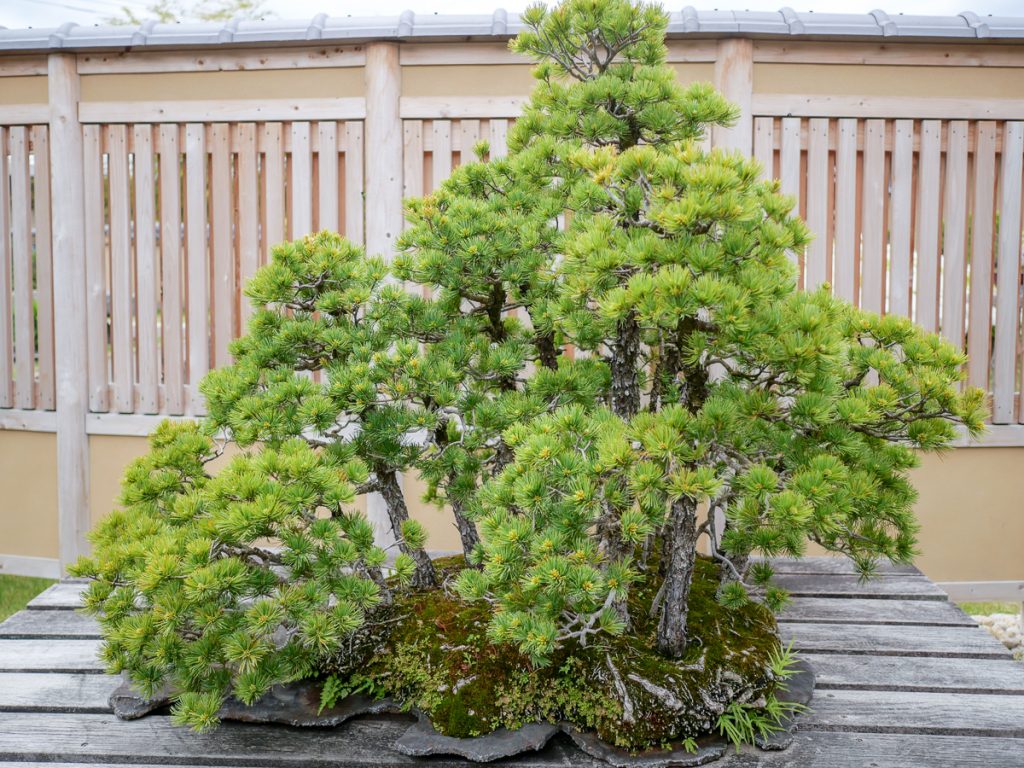
This bonsai is a ‘ne-tsuranari’
3. Jin and Shari
When examining the details of a bonsai, it’s essential to pay particular attention to ‘jin’ and ‘shari’, in addition to the roots, trunk, and leaves. The characters for these terms are ‘神 (jin)’ and ‘舎利 (shari)’. It is said that ‘shari’ is named after the relics of the Buddha, known as ‘busshari (仏舎利).’ The white, dead sections at the tips of the branches are referred to as ‘jin’, while the dead portions of the trunk are called ‘shari’.
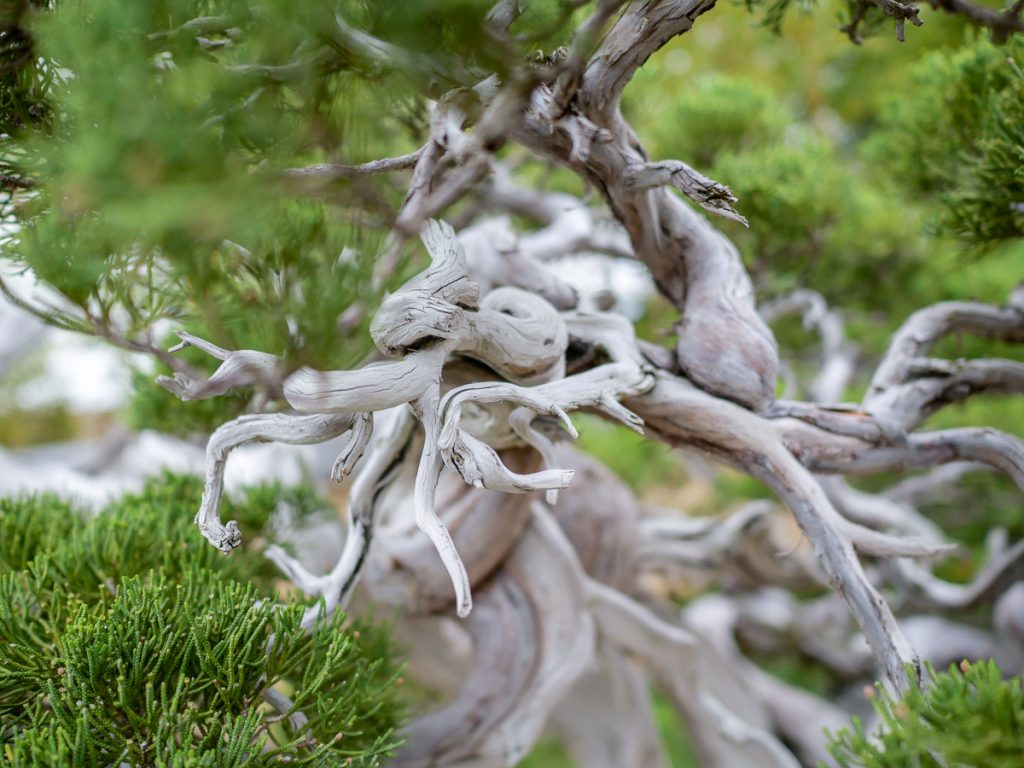
The dead sections at the tips of the branches are referred to as ‘jin’.
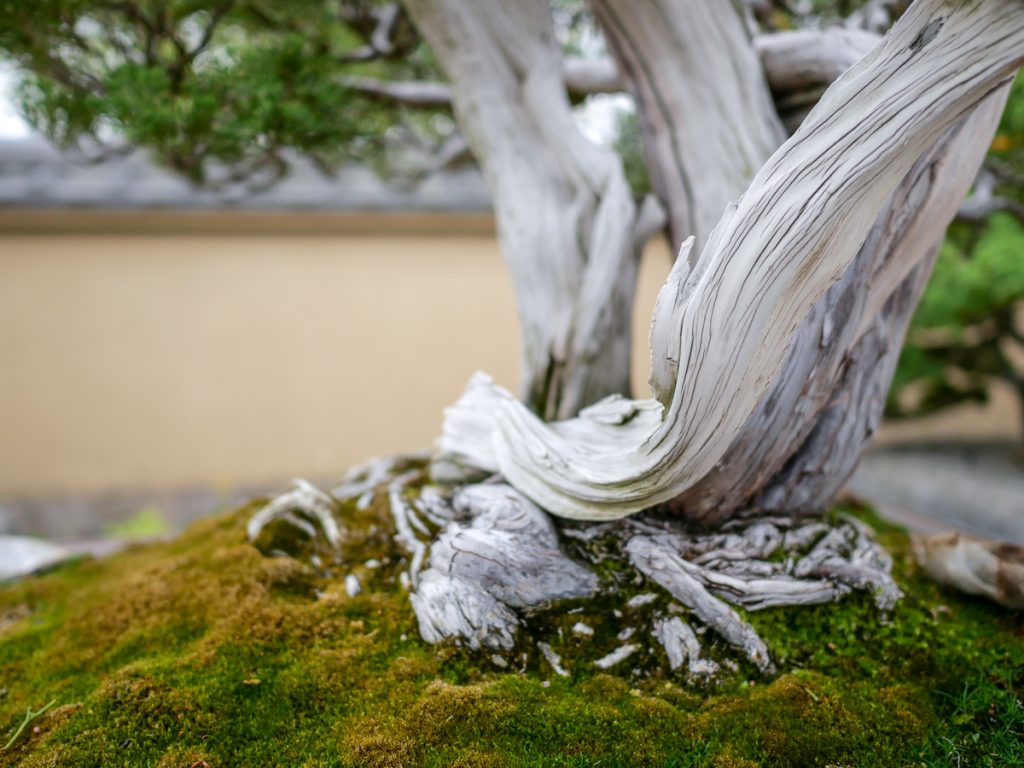
The dead portions of the trunk are called ‘shari’.
These elements create a contrast with the living parts of the tree, expressing the vitality of a tree thriving in nature. They also serve to highlight the vibrant colors of the leaves, adding to the overall visual interest.
4. Tree Age and ‘mochikomi’ (持ち込み: Cultivation over time)
Visitors to bonsai museums often ask about the age of the trees. Age is indeed one measure of a bonsai’s value. The older the bonsai, the more challenging it becomes to maintain, and it gains a depth of character and beauty that reflects its age.

Some captions include an estimated age of the bonsai.
For example, this is the oldest bonsai in our collection—an Ezo pine estimated to be around 1,000 years old.
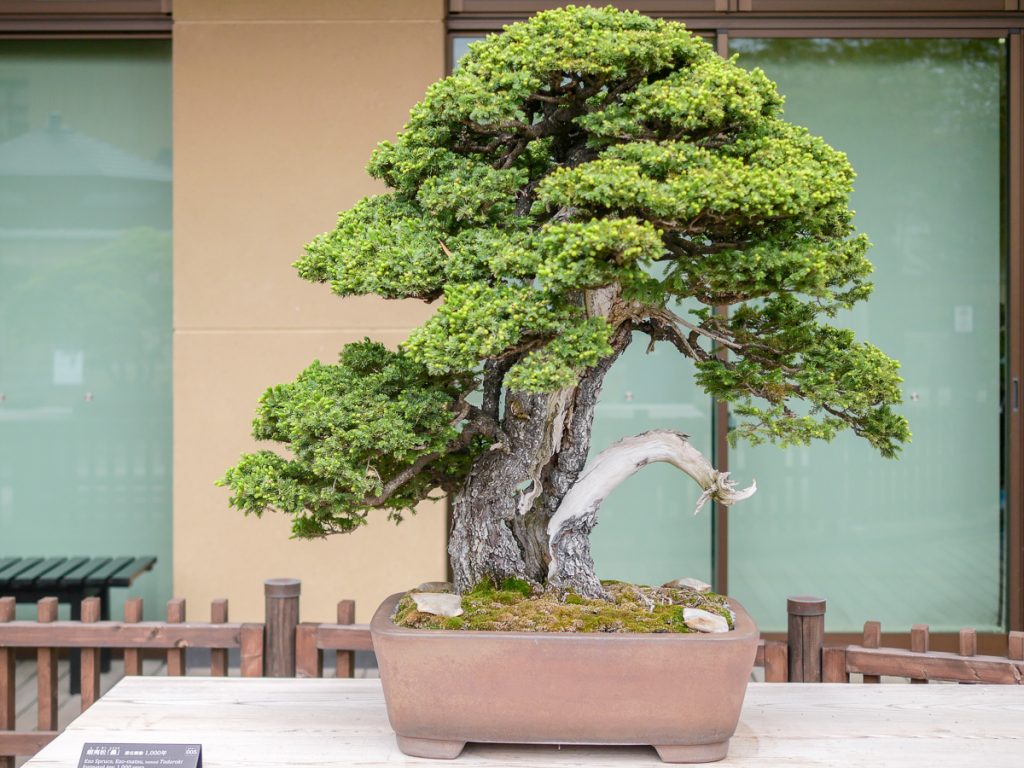
The trunk is hollow, conveying a sense of the harsh passage of time, doesn’t it?
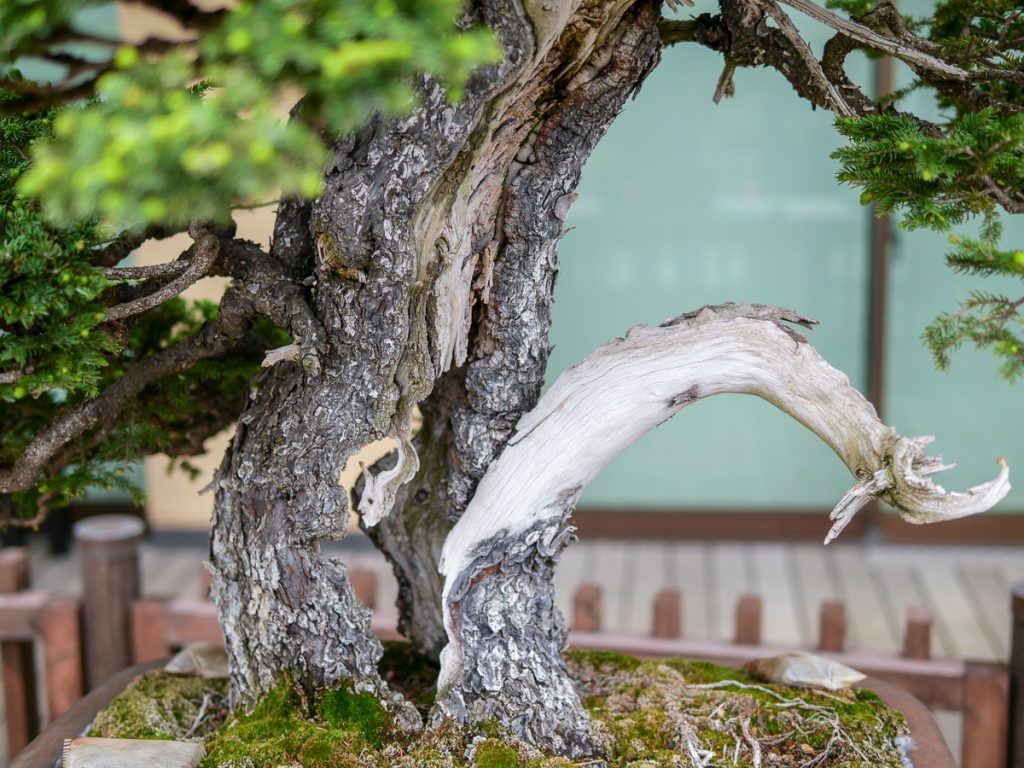
When we think of very old trees, we might imagine large ones, but bonsai are carefully selected for their smaller size. During the bonsai styling process, branches are bent, shaped, and pruned to keep the tree compact. Trees like this Ezo pine (蝦夷松), which naturally grows in extremely cold climates, tend not to grow large to begin with. In fact, it’s said that over 100 years, its trunk may only thicken to about the size of a 500-yen coin.
Another equally important concept alongside age is the notion of mochikomi — a term that refers to the time a tree has been cultivated as bonsai within its pot. While age reflects the tree’s natural lifespan, mochikomi is about the years of dedicated care and refinement that have shaped it into its current beautiful form. This means that a bonsai’s value isn’t just in its age, but in the careful attention and artistry invested over time to create its distinctive shape and aesthetic.
5. The Art of the Bonsai Master
The appearance of a bonsai varies greatly depending on who has cared for it and how it was cultivated. Some bonsai trees have been maintained for over a hundred years, meaning that they’ve often passed through the hands of multiple bonsai masters over generations. While some may choose to respect the original vision of the previous master, there are instances where the new master decides to transform it into a completely different expression.
Even if a previous master declared, “This is the front,” a successor might argue, “This tree is best viewed from the back,” resulting in a change of perspective. Over time, both the front and back can become equally beautiful. For instance, our museum has a five-needle pine named ‘Higurashi (日暮し),’ which is stunning from both the front and the back. This has led to a well-known saying in the bonsai community: “There is no front or back when it comes masterpieces.“
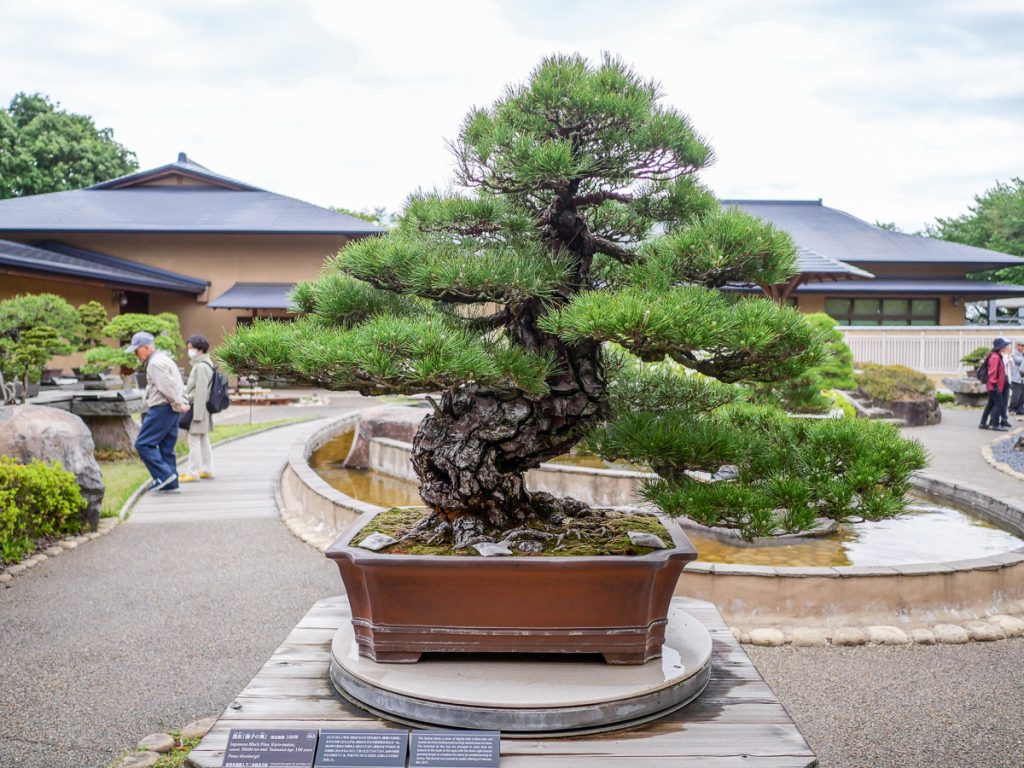
Bonsai is a living work of art
Having taught us what bonsai are and the key points are for appreciating them, Mr Hashimoto shares with us what make them so fascinating.
Unlike other works of art, bonsai features living trees as the main subject, which is why I often refer to it as a ‘living work of art.’ The way trees display different expressions throughout the seasons, whether shedding leaves or blooming flowers, as well as the ongoing refinement and transformation that occurs under the care of bonsai artists, are unique pleasures of bonsai. Of course, while many bonsai can be appreciated in bonsai gardens, at the Omiya Bonsai Art Museum in Saitama City, we offer a wealth of explanations and exhibitions related to the basics of bonsai, making it enjoyable even for beginners. I hope that not only bonsai enthusiasts but also a wider audience will come to appreciate it as a form of art.
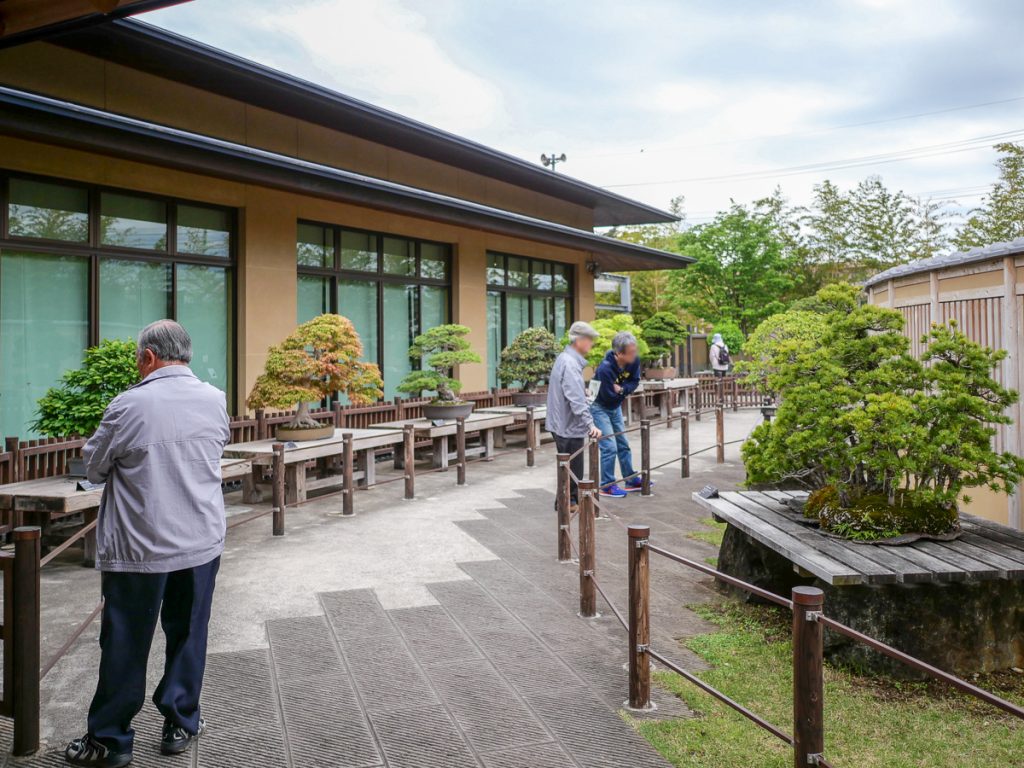
Stepping into the world of bonsai for the first time, one can appreciate it as an art form that encapsulates the dynamic essence of nature within a pot. This perspective enhances the enjoyment of bonsai, making it all the more enriching. For anyone with even a slight interest in bonsai, I highly recommend visiting the Omiya Bonsai Art Museum in Saitama City. There, you can not only savor the beauty of bonsai itself but also learn tips for appreciation and viewing.
Recommended for Beginners: Omiya Bonsai Art Museum
The only public art museum in Japan dedicated exclusively to bonsai. It has a collection of approximately 130 bonsai, with about 70 on display both inside and outside the museum at any given time.
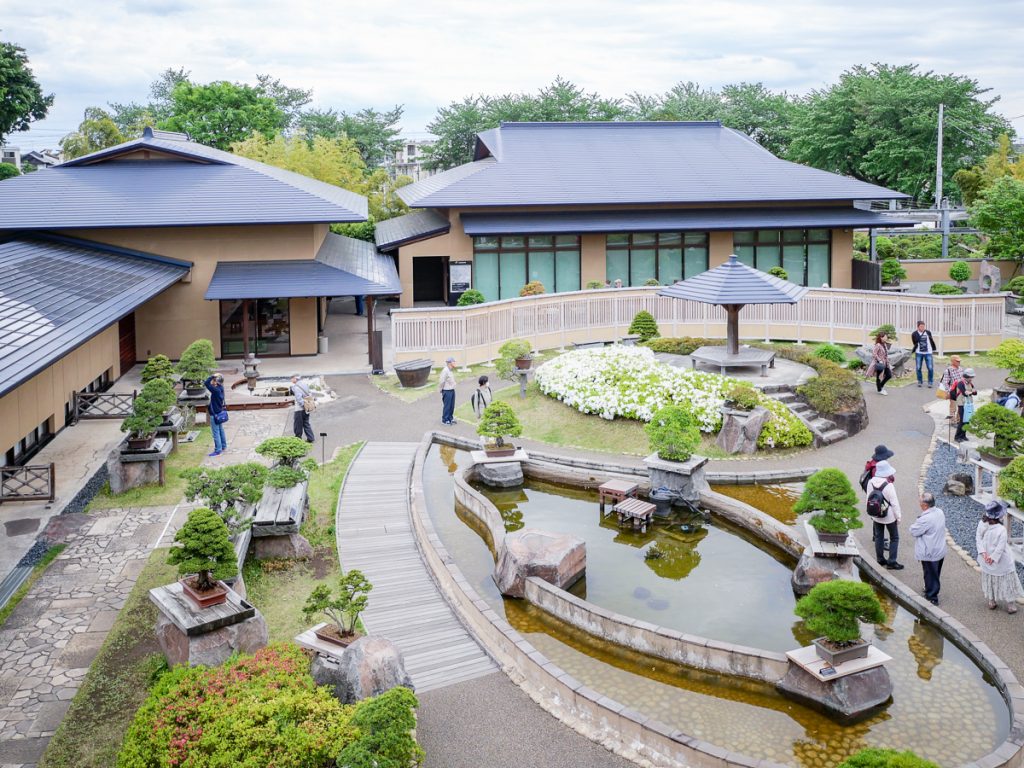
Saitama City Omiya Bonsai Art Museum Facility overview
Address: 2-24-3, Doro-cho, Kita-ku, Saitama, Saitama 331-0804, Japan
Telephone: 048-780-2091
Website: http://www.bonsai-art-museum.jp/
Closed: Thursday (open if Thursday is a bank holiday) *Closed at year-end and New Year, and on occasional days.
Opening times:
Mar-Oct 9:00-16:30 *entry by 16:00.
Nov-Feb 9:00-16:00 *entry by 15:30.
Access:
JR Utsunomiya Line ‘Doro Station’, 5 min walk from East Exit
Tobu Urban Park Line: 10 min walk from Omiya Koen Station
Photo / Kimura Yu (きむらゆう)
This article is translated from https://intojapanwaraku.com/rock/culture-rock/5813/




